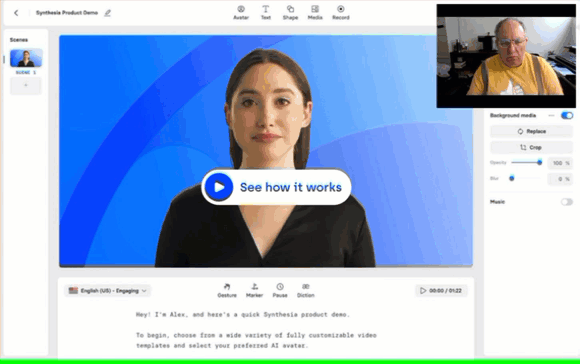Now, suddenly upon us, Artificial Intelligence comes to befuddle and bewilder academics with its ability to create new written content, deep fake us into believing Tom Cruise can play guitar, and imitate the voice of James Earl Jones as Darth Vader with astonishing realism. Can it fool us into thinking that a student’s AI-written work is their own? It is scary to think the answer may be yes.
When I reported on May 31, 2023, that Turnitin can effectively detect when a paper was written by AI, I apparently spoke too quickly. On June 2, the technology writer for the Washington Post reported that Turnitin’s reliability for spotting AI-written copy is questionable (Fowler, 2023). Turnitin claims a 1% error rate in flagging AI-written copy; but, it appears from hundreds of samples tested that Turnitin falsely identifies as much as 4% of papers as written by AI. This poses a major problem for that seemingly small percentage of students, especially for those students for whom English is a second language, that may be erroneously accused of cheating. Fowler’s takeaway is that AI detection is “little better than a random guess,” and that educators should talk with students for whom a false positive may occur.
In any event, here is the demonstration of Turnitin’s flawed approach to detecting AI in a student’s paper. Turnitin is shown in the example to have spotted a paper fully written by AI (100%), and a “patchwork” example that was written partially by AI (23%).
Turnitin’s own documentation includes PDF resources to help both students and teachers deal with AI issues such as how to talk with students about possible AI misuse; and, for students, an checklist of “ethics” for using AI.
To find out just what is AI, I asked one version of it, Google’s “Bard,” for its own self-definition, and here’s what it wrote: “Artificial intelligence (AI) is a branch of computer science that deals with the creation of intelligent agents, which are systems that can reason, learn, and act autonomously” (personal communication, 5/31/2023). So, okay, we’ll take that; it’s as simple an explanation as any.
However, some 350 computer industry leaders and scientists have signed onto a terse one-sentence warning that AI could make us humans extinct. Now, we’re talkin’. The least of our worries seems to be that AI will replace jobs, putting mostly white collar people out of work. Already, there is a tech that could replace your author, me, as a technology trainer with a realistic looking and sounding humanoid avatar.

Whether the use of AI is a violation of academic integrity seems to be a question now fraught with ambiguity. Perhaps (or not) there are considerations for its use. Could it be used as a tool to jumpstart research? Could Bard be asked the right question to guide a student to research a topic; or enter the most accurate search descriptors in a library database? I asked Bard how one would research Hip Hop’s influence on society, and it gave me some ideas, including a few sources to look up. Give it a try.
Or, simply ask Bard if grinder wheels can be used to sharpen a lawn mower blade. The answer it gave me (use 60-80 grit) led me to the local Home Depot and about $20 worth of supplies; I could almost shave with my lawn mower blade now.
We are obviously far from the last word to be written about AI. Math & Computer Science Professor Angela Antonou has shared two webinars that take a deep dive into AI’s threat and potential. The one on YouTube is shown below.
The other one is the recording of a Zoom webinar that comes courtesy of the Chronicle of Higher Education.
Finally, this could probably be a post-credit scene for an upcoming Marvel movie: It’s the new AI that is someday going to replace me.
Reference:
Fowler, G. A. (2023, June 2). Analysis | Detecting AI may be impossible. That’s a big problem for teachers. Washington Post. https://www.washingtonpost.com/technology/2023/06/02/turnitin-ai-cheating-detector-accuracy/
Was this helpful?
0 / 0